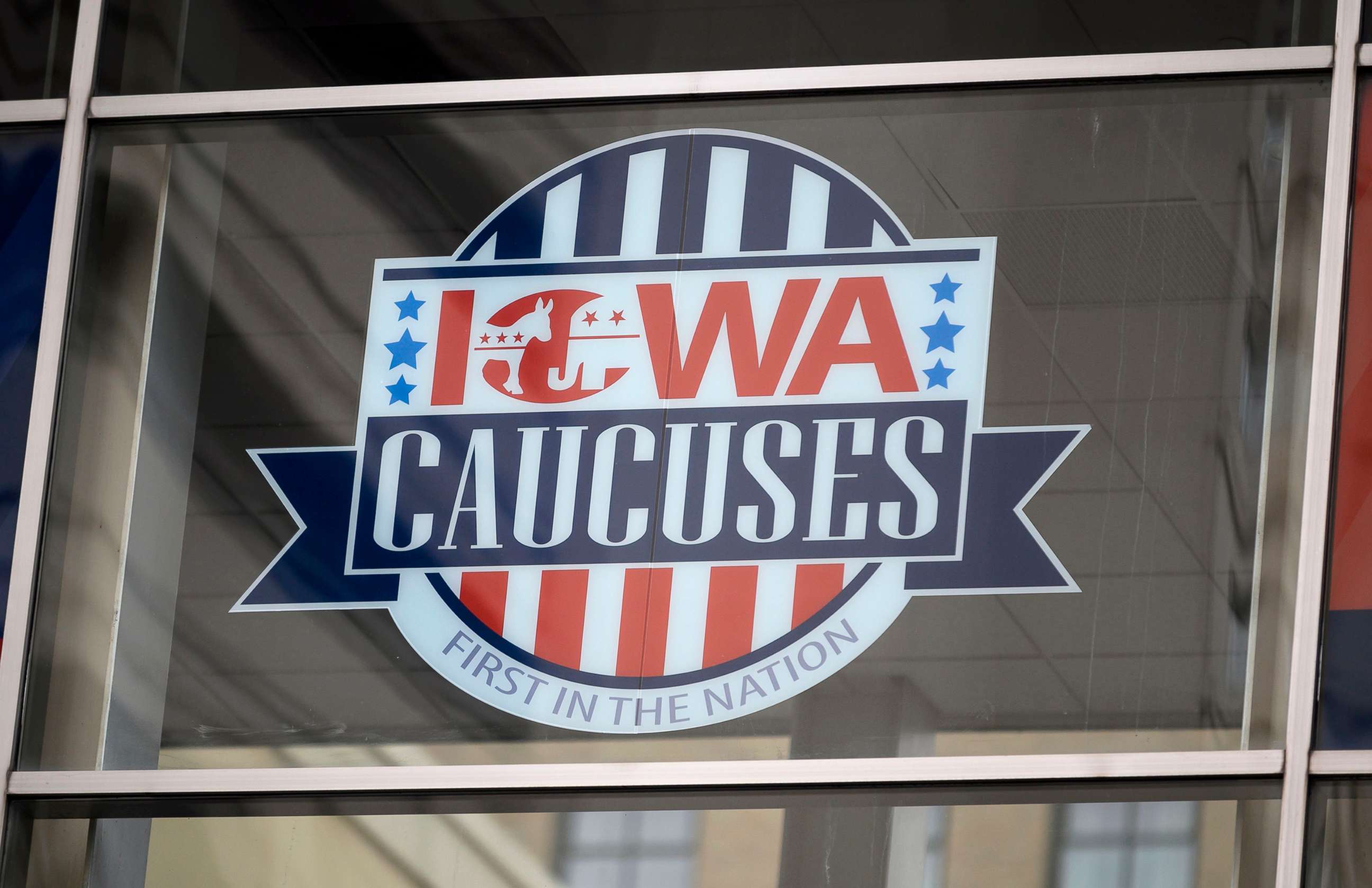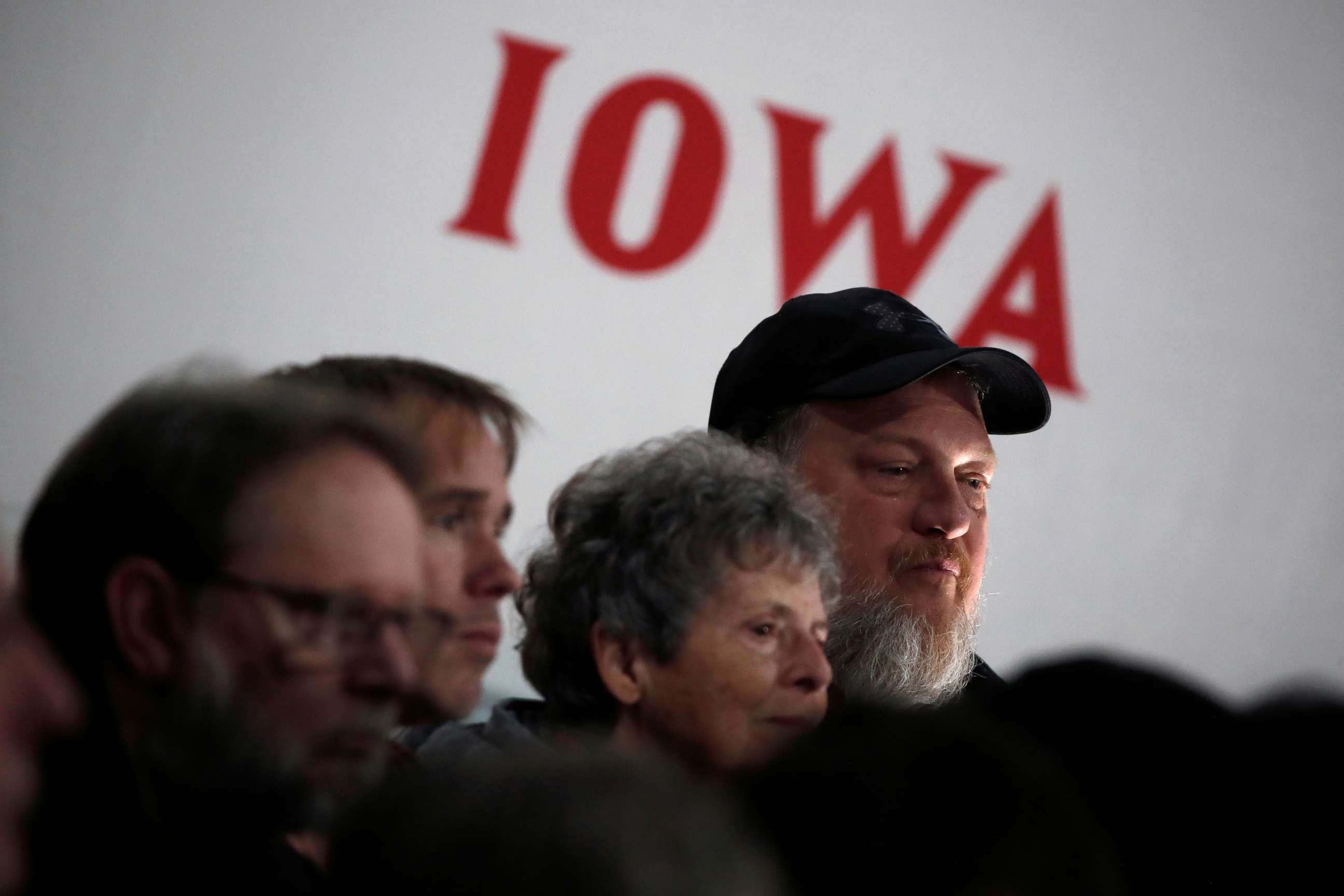Iowa caucuses considered a 'crucible' of 2020 primary: Here's how they work
The first contest of the presidential primary will be held on Monday.
The Iowa caucuses, which have been the first nominating contest in the country since 1972, marks the official start of the presidential election season - giving the Hawkeye State an outsize influence over the primary race.
This cycle, the first-in-the-nation caucuses will be held on Monday, Feb. 3 with 41 delegates up for grabs on caucus night, significantly less than delegate-rich California’s 415.
Before Monday night’s caucuses, here is what you need to know about the 2020 Iowa caucuses:
What is a caucus?
Caucuses are neighborhood gatherings or party meetings that take place all at the same time all across the state.
Iowans gather at each caucus site, either at one of the 1,678 traditional precinct caucuses across the state, or at one of the 87 "satellite caucus" locations around the world, including 60 in-state, 24 across 13 states and Washington, D.C., and three abroad.
The satellite caucuses, which take place on Monday parallel to the precinct caucuses, are designed to expand accessibility and participation in the caucus process for those who cannot make it to their assigned precinct, like shift workers, people in retirement homes and Iowans living abroad; a few are also aimed at attracting voters in underrepresented communities.
At this year’s caucuses, the Iowa Democratic Party is preparing for their biggest turnout in modern political history, expecting to surpass 2008’s record-setting turnout when more than 239,000 voters showed up to caucus.
When are the Iowa caucuses and how do they work?
The Iowa caucuses are slated for Monday, beginning at 8 p.m. ET, with some satellite caucuses beginning a few hours before the precinct caucuses.
The Iowa caucuses begin when voters from across the state head to their designated precinct, which are often make-shift polling places inside schools, churches, union halls, etc. to caucus for their candidate of choice. Anyone who will be 18 years old by Election Day, on Nov. 3, will be able to participate in the 2020 caucuses, even if a caucusgoer is still 17-years-old on Monday.

Throughout the night, Iowans not only declare a presidential preference, but they also discuss issues defining the Democratic platform and elect local leaders, underscoring the effort to keep the process local.
The caucuses officially begin with the caucus leaders discussing party business and opening up the floor to give campaign representatives the opportunity to deliver speeches and spend time jockeying support for their top choice -- in the hopes of helping a presidential candidate establish an early lead towards the nomination.
"What the Democrats do is that the Democrats who show up for a precinct caucus will literally vote with their feet. It's a very physical, participatory experience," said Karen Kedrowski, director of the Carrie Chapman Catt Center at Iowa State University.
Caucusgoers declare their support for a candidate by physically moving to a designated space in the room. The process, which traditionally takes hours but has been shortened this cycle, ultimately divides the entire room into groups based on the candidate they’re backing. The precinct captains tally the number of caucus-goers in each group - this is what is known as the first alignment.
At most precincts, a presidential contender needs support from at least 15% of the vote at that caucus site to be eligible to receive any delegates. But in precincts with less than four delegates, the threshold is slightly higher -- since the delegates cannot be split between multiple candidates.
Candidates who reach the 15% threshold are considered to be "viable," at which point their support is locked in and cannot go down. Caucusgoers that are part of viable groups can turn in their presidential preference cards, which marks their choice for president, sign them and go home. The cards are important for creating a paper trail, allowing for a recount if needed.
But for those caucusgoers in the room that are part of nonviable groups, meaning they backed a candidate who failed to cross the 15% threshold, they have a few options in the second round, which is called realignment: they can move to a group supporting a viable candidate; they can join another candidate’s nonviable group to help that candidate become viable or attempt to persuade other caucus-goers to join their group and earn enough support for their first choice to make that candidate viable; they can move to the uncommitted group; or they can go home.
After the realignment is over, caucusgoers fill out their presidential preference cards, sign it and turn it in. This is what is known as the final alignment. This cycle, the Iowa Democratic Party streamlined the caucus process, giving caucusgoers only up to two opportunities to declare their pick for president.
With such an unsettled race, the polling front-runners have reportedly started reaching out to their rivals in the middle tier to privately broker a deal, in which the two campaigns will share support in a precinct if one of them is not viable.
How is a winner declared?
The votes in the caucuses are actually votes to elect delegates to the Democratic National Convention. The candidates’ goal is to secure a majority of delegates, which is 1,991 pledged delegates this cycle, in order to win the nomination at the convention, which will be held in Milwaukee in July.
On caucus night, the candidates will ultimately be vying for Iowa's 41 national delegates.
Once the caucus process concludes, the state party translates the results from the final alignment, or the second round, into delegates through a formula determined by the party.
Candidates have to win at least 15% of the vote statewide or in a congressional district, or both, in order to win any national delegates -- so just because a candidate secures 15% at one precinct, and are therefore eligible to receive delegates, it's not a guarantee they will be awarded any at the end of the night.
For the first time this cycle, the Iowa Democratic Party will report three different numbers from the results of the caucuses: the total vote from the first alignment, considered to be a popular vote from all the caucusgoers who walked through the door, the total vote after the final alignment, which is considered to reflect the top consensus-builders of the night, and the number of "state delegate equivalents" won by each candidate.

"State delegate equivalents" are the projected number of state party convention delegates a candidate will receive based on the results of the precinct caucuses. These will only be awarded to viable candidates. The state delegate equivalents are allocated in proportion to a candidate's performance in the final alignment and will correlate to how many national delegates a candidate receives.
Historically, the winner of the Iowa caucuses was declared based on who has the most state delegate equivalents. In 2020, ABC News will be using the state delegate equivalents to project a winner.
The state party doesn’t declare a winner of the caucuses, but with three different streams of data, up to three candidates could walk away declaring victory, with each one spinning the results in their favor.
Why do the Iowa caucuses matter so much?
The national spectacle of Iowa’s caucuses more or less began in 1976, four years after the Democratic Party overhauled the entire primary process in 1968 and when the state snagged the earliest slot in the calendar.
"The sea change came in 1976. In 1976, there was a little known governor from Georgia named Jimmy Carter who decided that he wanted to be President of the United States," Kedrowski said. "The way that he was going to make his mark was to come to Iowa and to do better than what anybody expected him to do in the Iowa caucus."
After declaring that he won the Iowa caucus, Carter was "catapulted" to "national prominence," Kedrowski continued. "Of course, he went on to win the White House. And ever since then...Iowa has been the first in the nation and has been sort of the crucible and the first serious contest that we have seen." A similar fate in Iowa propelled then-candidate Barack Obama to the top of the field in 2008, with the former Illinois senator ultimately capturing the Democratic nomination and the White House.
But while Iowa doesn’t always deliver the nomination, it does often winnow the existing field of candidates.
In 2020, the scaled up, yet streamlined, caucuses are expected to be among the most competitive, with each poll throughout 2019 and early 2020 from Iowa’s largest newspaper, the Des Moines Register, in partnership with CNN, showing a different front-runner among the top tier -- former Vice President Joe Biden, former South Bend, Indiana Mayor Pete Buttigieg, Vermont Sen. Bernie Sanders and Massachusetts Sen. Elizabeth Warren - taking the lead.
Reflecting the volatility of the race leading into caucus day, when a number of Democratic contenders are seeking to upend expectations, less than half, 45%, of likely Iowa Democratic caucus-goers have made up their minds and said they could be persuaded to support another candidate, according to the most recent Des Moines Register/CNN poll from mid-January.
ABC News' Samantha Sergi contributed to this report.




